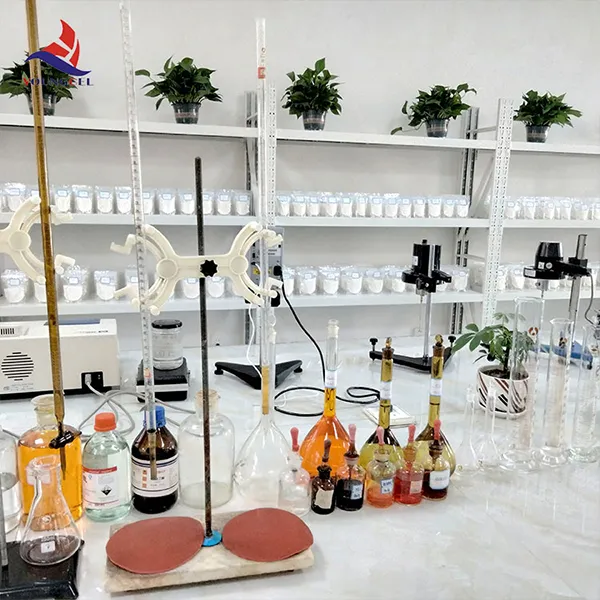Understanding Cellulose Ether The Role of Hydroxyethyl Methyl Cellulose (HEMC)
Cellulose ethers are a category of compounds derived from cellulose, a natural polymer found in plant cell walls. Among the various types of cellulose ethers, Hydroxyethyl Methyl Cellulose (HEMC) stands out due to its unique properties and versatility, making it an essential ingredient across numerous industries, including construction, pharmaceuticals, food, and cosmetics.
HEMC is synthesized by the partial substitution of cellulose with hydroxyethyl and methyl groups. This modification enhances the cellulose's solubility and modifies its physical properties, allowing it to dissolve in cold water to form a viscous solution. One of the most significant advantages of HEMC is its ability to improve the texture and consistency of various formulations. It serves as a thickening agent, stabilizer, and emulsifier, contributing to the overall performance of products in which it is used.
Understanding Cellulose Ether The Role of Hydroxyethyl Methyl Cellulose (HEMC)
The pharmaceutical sector also benefits from the unique attributes of HEMC. It is frequently used as a binder and thickening agent in the formulation of various medications, including tablets, gels, and suspensions. HEMC contributes to the controlled release of active ingredients, thus improving the efficacy of drug delivery systems. Moreover, its biocompatibility makes it a suitable choice for use in pharmaceutical applications, ensuring safety for human consumption.
cellulose ether hemc

In the food industry, HEMC is recognized for its ability to improve the texture of food products without compromising their quality. It acts as a stabilizer and thickener in sauces, dressings, and dairy products, enhancing their mouthfeel and consistency. Additionally, HEMC is utilized in gluten-free formulations, providing the necessary structure and texture that is often lacking in such products. Its versatility in food applications makes it a valuable additive, particularly in today’s market, where consumer preferences lean towards healthier and cleaner ingredients.
Cosmetics and personal care products also incorporate HEMC due to its thickening and stabilizing properties. It is found in creams, lotions, and gels, where it helps maintain the desired viscosity and enhances the sensory experience for the user. Moreover, HEMC contributes to moisture retention in skin formulations, making it a popular choice among manufacturers aiming to provide moisturizing benefits.
Despite its numerous advantages, the production and use of HEMC must comply with regulatory standards to ensure consumer safety and product efficacy. Quality control during manufacturing processes is crucial to maintain the consistency and purity of the product. Furthermore, ongoing research and innovation in cellulose ethers are exploring ways to enhance their functionality and sustainability, aiming for greener production methods and biodegradable alternatives.
In conclusion, Hydroxyethyl Methyl Cellulose (HEMC) exemplifies the transformative potential of cellulose ethers across various industries. Its unique properties, such as solubility, thickening ability, and stabilizing effects, make it an invaluable ingredient in construction, pharmaceuticals, food, and cosmetics. As industries continue to evolve and consumer demands shift towards sustainable and high-quality products, the role of HEMC is likely to grow, driven by ongoing research and innovation. Understanding the applications and benefits of HEMC helps highlight the importance of cellulose ethers as a cornerstone in modern material science and application development.
-
Premium Detergent Grade HPMC Hydroxypropyl Methylcellulose: Superior Thickening & StabilityNewsAug.31,2025
-
HEC 100000 Hydroxyethylcellulose for Paint | Superior ThickeningNewsAug.30,2025
-
Wall Putty Rdp Powder Packaging DesignNewsAug.29,2025
-
Introduction to Hpmc Hydroxypropyl Methyl CellulosNewsAug.29,2025
-
Hpmc Industri Grade IntegrationNewsAug.29,2025
-
How to Choose the Right Construction AdhesiveNewsAug.29,2025




